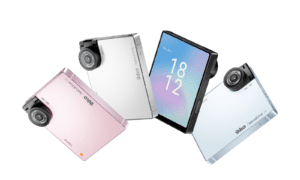The modern laboratory is on a relentless quest to use less sample, generate more data, and shorten discovery cycles. Shrinking reaction volumes from the microliter to the nanoliter scale delivers a triple dividend—lower reagent costs, higher throughput, and tighter reaction kinetics—but only if dispensing is precise, repeatable, and seamlessly integrated with robotics and analytics. Over the past five years, advances in non-contact droplet ejection, microvalve-based pipettes, and digital microfluidics have pushed routine handling down to single-digit nanoliters, opening new horizons in genomics, high-content screening, and point-of-care manufacturing. Specialized platforms such as SCIENION’s sciDROP family now bracket picoliter and nanoliter regimes, so the same instrument can print 10 pL antibody spots and 50 nL PCR mixes without a tool change—an agility that is reshaping how labs design automated workflows through nanoliter pipetting.
Why Moving to Nanoliters Matters
Miniaturization is more than thrift. Reaction volumes below one microliter accelerate diffusion-limited steps, improve thermal ramp rates, and reduce matrix effects that can suppress signal in mass spectrometry or next-generation sequencing. In enzymology assays, cutting from 5 µL to 100 nL slashes substrate spend by 98 percent while maintaining signal-to-noise because optical path lengths scale with volume. The 2024 growth spurt in acoustic ejection mass spectrometry (AEMS) underscores the performance jump: by launching 2.5 nL droplets directly into an electrospray plume, researchers quantified 10 acute-phase protein markers at a pace of 2,000 samples per hour with <7 % CVs—throughput unattainable with conventional LC-MS autosamplers.
Technology Landscape: From Acoustic Waves to Solenoid Valves
Two non-contact paradigms dominate nano-dispensing. Acoustic droplet ejection uses focused ultrasound to catapult a column of liquid upward from a source plate; drop size is set by transducer frequency and pulse width, allowing programmable steps from 2 nL to 100 nL without touching the sample. Widely adopted in fragment-based drug discovery, acoustic systems excel at transferring DMSO-dissolved libraries into assay plates without cross-contamination. Solenoid-valve jetting—exemplified by SCIENION’s sciDROP NANO head—generates discrete plugs of nanoliters by opening a micro-orifice for milliseconds. Unlike acoustic methods, valve jetting tolerates viscous buffers and organic solvents up to 22 mPa·s, so it can spot antibody lines, bead slurries, or whole blood onto microfluidic cartridges with positional accuracy better than 10 µm. Vendor application notes report volume CVs under 5 percent across eight simultaneous channels, enabling parallel deposition onto biosensor arrays for multiplex rapid tests.
Hybrid instruments merge these heads on a single XYZ gantry, letting an engineer print picoliter DNA probes with a piezo crystal, switch to nanoliter enzyme cocktails via a solenoid, then back to cell seeding—all in the same run file. That versatility has accelerated move-in timelines for startups because a single platform can service R&D prototyping, validation, and pilot manufacturing.
Integrating Nanoliter Dispensing into End-to-End Automation
Low-volume handling pays dividends only when upstream and downstream devices keep pace. Vision-guided robotic arms now place acoustic source plates directly under droplet ejectors, while conveyor shuttles deliver target plates to incubators or mass-spec docks without human intervention. The Frontiers in Pharmacology team at Sanofi recently paired AEMS transfer with solid-supported membrane electrophysiology on a single robotic deck, pushing an entire glutamate-transporter screen from compound library to IC₅₀ values in 48 hours. Comparable gains are emerging in molecular biology: low-dead-volume tips on open-source robots such as the OT-3 aspirate 50–500 nL reagent plugs for qPCR set-up, then hand plates to a thermocycler, trimming total reaction cost to pennies while doubling daily batch numbers.
Quality control is critical at these scales, because a 5 nL deviation represents a 10 percent error in a 50 nL reaction. Labs therefore embed inline gravimetric weigh-stations or capacitive sensors that flag out-of-tolerance drops before plates exit the liquid-handling cell. Modern schedulers understand these QC nodes and reroute faulty wells for re-dispense without halting the run, sustaining overall equipment effectiveness above 85 percent.
Applications Lighting Up the Pipeline
High-throughput screening. Nanoliter transfers cut DMSO load and plate weight, allowing 1,536-well assays to run on standard centrifuge rotors. Acoustic ejection’s touch-free nature virtually eliminates carry-over, a boon for covalent inhibitor programs where picogram contamination can skew hits.
Single-cell ‘omics. In Chromium-style microfluidics, nanoliter reagent plugs merge with barcoded cells before encapsulation, ensuring stoichiometric ratios that maximize cDNA yield and uniformity.
Point-of-care test manufacturing. Valve-jet nanoliter printing lays down capture-antibody lines on polymer foils at 20 mm s⁻¹, consuming only 16 percent of the reagent required by capillary pens while meeting CE-IVD signal specs, an efficiency crucial for low-margin diagnostic strips.
Synthetic biology foundries. Automated build-test-learn loops rely on nanoliter acoustic transfers to assemble DNA parts and feed mini-bioreactors; volumetric precision keeps stoichiometry tight, improving predictive models for gene-circuit behavior.
Practical Considerations for Reliable Nano-Workflows
Successful adoption starts with calibration. Operators map droplet size against pulse parameters weekly using fluorescence or gravimetry, then store lookup tables that software invokes automatically. Plate consumables matter: low-evaporation source plates with acoustically transparent films prevent air-bubble artefacts, while hydrophobic-coated target plates minimize satellite droplets. Environmental controls—class-1000 laminar flow, 40 – 60 % RH—reduce static and evaporation that can skew nanoliter volumes. Finally, data systems must annotate every dispense event with head ID, tip condition, and environmental metadata; AI-driven deviation detection models trained on this log data are already predicting misfires before they occur, scheduling maintenance proactively.
Future Outlook
The next horizon is true “on-the-fly” adaptive pipetting: dispensers that read optical or impedance feedback from the drop mid-flight and adjust subsequent pulses in real time, driving CVs toward 1 percent. Concurrently, toolmakers are integrating nanoliter jets into microfluidic chips themselves, blurring the boundary between liquid handler and assay device. As regulators push for greener labs, many institutions now factor reagent savings and plastic-tip reductions into ESG metrics—another tailwind for nano-scale workflows.
Conclusion
Nanoliter pipetting has moved from a niche capability to a cornerstone of modern lab automation. By slashing volumes while boosting speed and precision, it empowers everything from ultrasensitive proteomics to cost-effective diagnostic production. Coupled with robotics, inline QC, and intelligent scheduling, today’s nano-dispensers deliver a unified pipeline that converts precious reagents and scarce samples into richer data at industrial scale. For labs planning their next automation upgrade, investing in reliable nanoliter dispensing is less a luxury than the logical foundation for high-velocity science in the decade ahead.
Read More From Techbullion



































